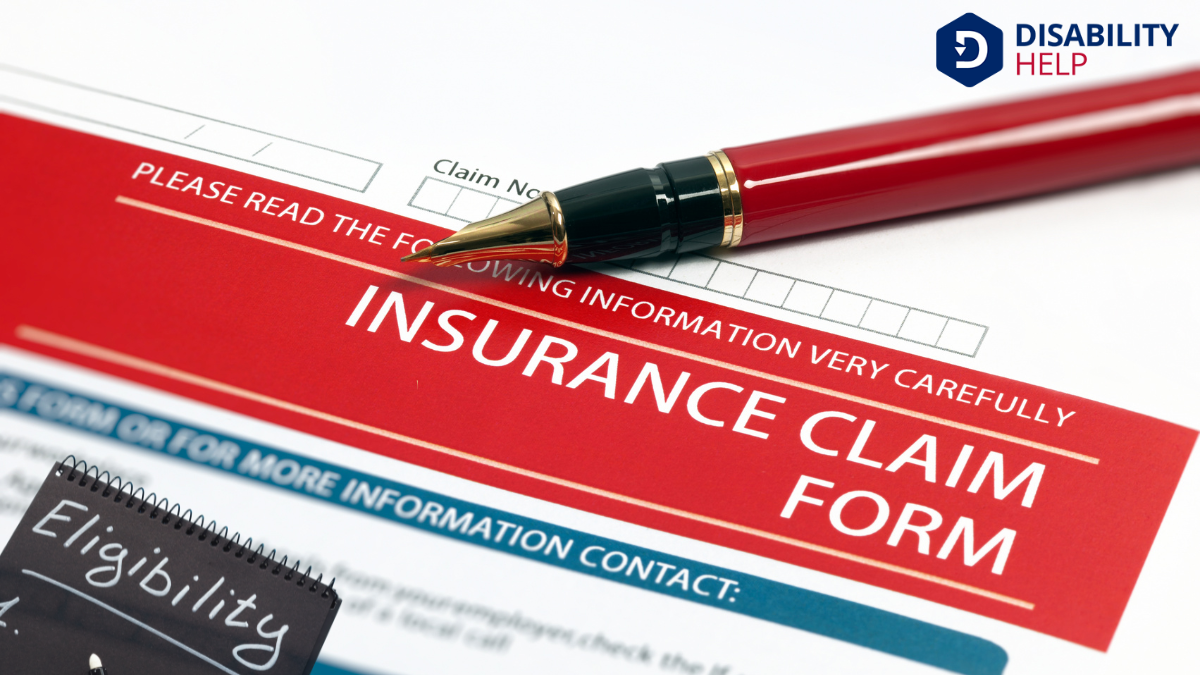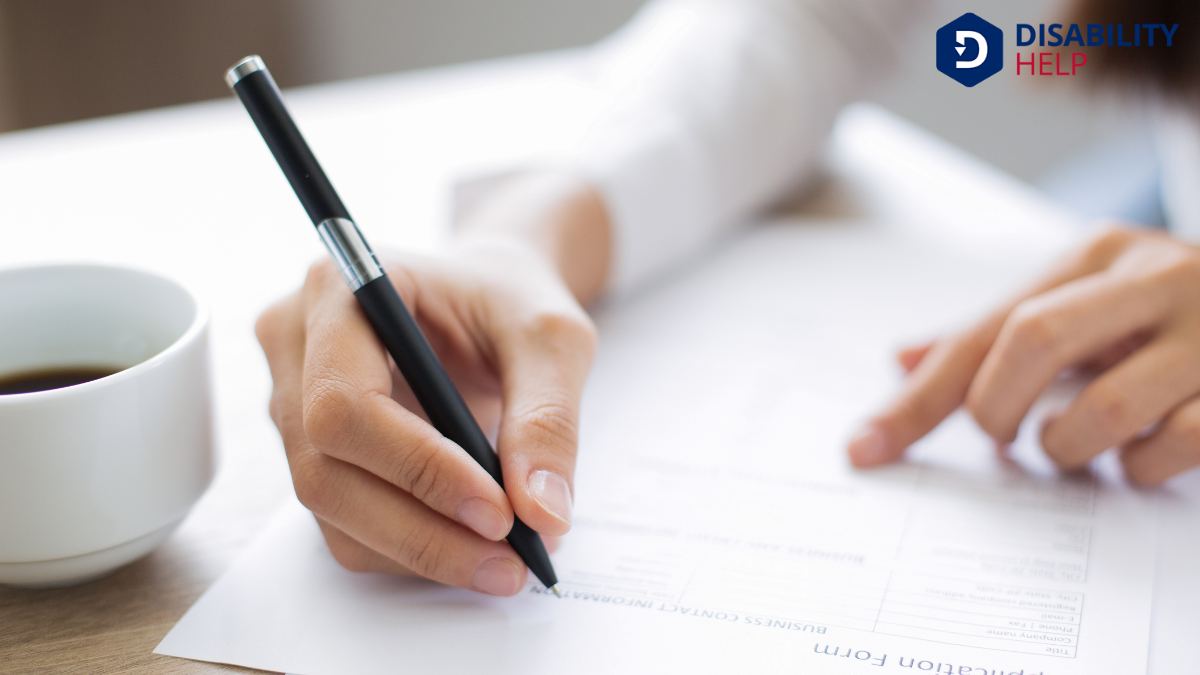Filing a disability insuranceA form of insurance that provides income to individuals who are unable to work due to a disability. claim can feel overwhelming, but we’re here to guide you through the process step by step. Before diving in, it's vital to understand the ins and outs of your policy to guarantee eligibility and compliance. We’ll explore key actions like gathering essential documentation and keeping track of deadlines. By the end, you'll feel confident and prepared to navigate any challenges that come your way. Curious about where to start? Let's begin our journey together.
Key Takeaways
- Familiarize yourself with your disability insurance policy's terms, conditions, and definition of "disability."
- Gather essential documentation, including medical records and a detailed doctor's statement, to support your claim.
- Notify your insurance provider promptly and accurately complete the claim application with all required information.
- Coordinate with your employer to verify employment details and gather additional supporting materials.
- Track claim status, meet filing deadlines, and follow up with your insurer to ensure timely processing.
Understanding Your Disability Insurance Policy
Maneuvering the details of your disability insurance policy is essential before filing a claim. We must first familiarize ourselves with the terms and conditions outlined in our policy. It outlines what types of disabilities are covered and the extent of the benefits.
Let’s pay close attention to the definition of "disability" in our policy, as it may vary between different insurers. Understanding these specifics helps us avoid surprises when we file a claim.
We should also review the waiting period, or "elimination period," which is the time between becoming disabled and receiving benefits. By understanding this timeframe, we can better manage our finances during the waiting period.
It’s important to stay informed on any policy exclusions that might affect our claim’s success.
Determining Eligibility for a Claim

To determine if we're eligible to file a disability insurance claim, we first need to understand our policy requirements.
It's essential to review the specific conditions outlined in our policy to guarantee they match our situation.
Additionally, let's gather and assess our medical documentation to support our claim effectively.
Understanding Policy Requirements
Before we immerse ourselves in filing a disability insurance claim, let's first verify that we comprehend the policy requirements that determine our eligibility. Understanding these requirements guarantees we don't encounter avoidable setbacks.
Start by examining our policy documents closely. We should focus on:
- Coverage Details: Determine what types of disabilities are covered and any exclusions.
- Waiting Period: Identify any waiting period before benefits commence.
- Definition of Disability: Understand how our policy defines "disability" to confirm our situation fits.
- Benefit Duration: Know how long we can expect to receive benefits.
Taking these steps will help us identify if we're eligible and prepare us for a smoother claims process.
Let’s be thorough and verify our understanding aligns with our policy stipulations.
Assessing Medical Documentation
Having grasped the specifics of our policy, we now focus on the crucial role that medical documentation plays in determining our claim eligibility. Our medical records must clearly outline our condition, treatment plans, and how our ability to work is impaired. This documentation serves as the cornerstone of our claim, so it’s essential we gather detailed records from our healthcare providers.
Let’s make sure these documents are up-to-date, detailed, and accurately reflect our current state. We should include doctor’s notes, test results, and any relevant correspondence.
It’s also wise to verify that our healthcare providers understand the importance of these records in our claim process. By presenting thorough medical documentation, we enhance our chances of a successful claim outcome.
Let’s approach this step methodically and proactively.
Gathering Essential Medical Documentation
As we prepare to file our disability insurance claim, gathering essential medical documentation is vital.
We'll need to collect our medical records, along with a detailed statement from our doctor to support our claim.
Additionally, including results from any diagnostic tests can strengthen our case by providing concrete evidence of our condition.
Required Medical Records
To successfully file a disability insurance claim, we need to gather essential medical documentation that supports our case.
This involves collecting specific medical records that clearly demonstrate our disability and its impact on daily life.
Here's a list of vital documents we should include:
- Medical History Records: These provide a thorough view of our health over time, including past diagnoses and treatments.
- Treatment Notes: Detailed notes from physicians about our condition and response to treatments are invaluable.
- Diagnostic Test Results: These results, like X-rays or MRIs, offer concrete evidence of our medical issues.
- Prescriptions and Medications: A list of medications we’re taking helps illustrate ongoing management of our condition.
Doctor's Statement Importance
While gathering essential medical documentation, one of the most important elements is the doctor’s statement. It’s essential because it provides the insurance company with a professional evaluation of our condition. This statement should detail the diagnosis, treatment planA detailed plan developed by healthcare professionals to treat a specific health condition, outlinin..., and how our illness or injury affects our daily activities.
We need to guarantee it’s thorough and accurately reflects our situation. A clear and extensive doctor’s statement can greatly influence the decision on our claim.
We should communicate openly with our doctor, explaining the importance of this document. By doing so, we can make certain they include all necessary information.
It's helpful to review the statement together to confirm it’s complete. Remember, a well-prepared doctor’s statement can make a difference in the approval process.
Diagnostic Test Results
One of the critical steps in filing a disability insurance claim is gathering diagnostic test results.
These results provide concrete evidence of your medical condition and support your claim. Without them, insurers might question the severity or legitimacy of your disability.
To guarantee we've everything in order, let's focus on collecting essential documentation:
- Request Copies: Contact each healthcare provider to obtain all relevant test results.
- Organize Chronologically: Arrange these documents in chronological order to present a clear medical history.
- Highlight Key Findings: Make sure to highlight significant test results that illustrate your condition.
- Verify Completeness: Double-check that all necessary tests are included and nothing is missing.
Notifying Your Insurance Provider
Before we plunge into the specifics of notifying your insurance provider, it's important to gather all necessary information to guarantee a smooth process.
Let's make sure we've our policy number, medical records, and contact details handy. This preparation will make it easier when we reach out to them.
Now, let's notify our insurance provider promptly. We can usually do this by phone or email, depending on their preference.
When we contact them, let's be clear about our intent to file a disability claim and confirm any deadlines we need to meet. It's helpful to take notes during this conversation, jotting down the representative's name and any instructions provided.
This step makes certain we're on track and fully informed for the next stages of our claim process.
Completing the Claim Application Form

To successfully complete the claim application form, we need to focus on accuracy and completeness.
Let’s make sure that our application reflects our circumstances clearly. Here’s how we can enhance our chances of a smooth process:
- Review Instructions Carefully: Before we jump in, let’s read all instructions to avoid missing essential details.
- Gather Personal Information: We'll need our identification, policy number, and contact details ready to guarantee consistency.
- Detail Our Condition: Describe our disability thoroughly, highlighting symptoms, diagnosis, and treatment dates.
- Double-Check for Errors: Mistakes can lead to delays. Let's review our entries to confirm everything matches our supporting documents.
Submitting Supporting Evidence
Now that we've completed the claim application form, let's focus on gathering the necessary supporting evidence.
We'll need to collect required medical documentation, guarantee our employer provides verification, and consider any additional supporting materials that might strengthen our claim.
Required Medical Documentation
Gathering the right medical documentation is crucial when submitting a disability insurance claim.
We understand that this process can feel overwhelming, but having the correct documents greatly increases our chances of a successful claim.
Let’s break down what we need:
- Physician's Report: This document should detail our diagnosis, treatment plan, and prognosis. It provides the insurer with an all-encompassing view of our medical condition.
- Test Results: Include any lab results, imaging studies, or other diagnostic tests that support our claim. These results offer concrete evidence of our condition.
- Medical History: A summary of our past medical records can help establish the progression of our condition.
- Specialist Letters: Endorsements from specialists add credibility and provide detailed insights into our specific health issues.
Being thorough guarantees our claim stands on solid ground.
Employer Verification Process
Before we plunge into the employer verification process, it's vital to understand the role our employer plays in supporting our disability insurance claim. They provide essential information about our employment status, job responsibilities, and salary details. This data helps the insurance company assess our claim's legitimacy.
To initiate this process, we should promptly inform our employer about our intent to file a claim. They'll likely need to complete specific forms and confirm details such as our last working day and any modifications to our duties due to the disability.
Additional Supporting Materials
When building a strong disability insurance claim, the backbone of our case often lies in the additional supporting materials we provide.
These documents substantiate our claim and clarify our situation, turning a simple application into a compelling story.
Let's guarantee we gather all necessary evidence:
- Medical Records: Obtain thorough reports from our healthcare providers detailing our condition and treatment.
- Doctor's Statement: A detailed letter from our physician explaining the extent of our disability and its impact on our daily life.
- Employment Records: Include documentation of our job duties and how our disability affects our ability to perform them.
- Personal Statements: Our own account of how the disability affects our life, adding a personal touch to our application.
Meeting Deadlines and Timelines
Steering through the intricate landscape of deadlines and timelines can be intimidating, yet it's vital to confirm your disability insurance claim is processed smoothly.
We must prioritize understanding the filing deadlines specific to our policy. Missing these can result in denied claims or delayed benefits. It's important to gather all required documents promptly, as they’re typically needed within a particular timeframe.
Let’s keep a calendar with all pertinent dates to avoid any last-minute rush. Many policies have a filing window, often 30 to 60 days, so acting swiftly is key.
If any extension is needed, contact the insurance provider immediately to explore available options. Staying organized and proactive guarantees our claim meets every deadline, safeguarding our financial peace.
Following Up on Your Claim Status

Why is it essential to track the progress of our disability insurance claim? It guarantees we’re informed, prepared, and able to address any issues promptly. Following up on our claim status helps us stay proactive. Here’s why it matters:
- Verification: Confirming that the insurer received our claim avoids unnecessary delays and guarantees all required documents are in place.
- Updates: Regular check-ins provide updates on any additional documentation needed or steps to be taken.
- Timeliness: Monitoring the timeline helps us anticipate when we might receive benefits, aiding in financial planning.
- Error Correction: Detecting errors early allows us to correct them before they become larger obstacles.
Handling Claim Denials or Disputes
Facing a denial or dispute in our disability insurance claim can be frustrating, but it’s vital to address the situation promptly and effectively.
First, let's thoroughly review the denial letter to understand the reasons behind the decision. Often, the insurer will outline specific issues or missing documentation.
We should gather any additional evidence or information that supports our claim, such as medical records or physician statements. Once we've compiled this, we can write an appeal letter addressing the insurer's concerns directly.
It’s important to meet any deadlines they’ve set for filing an appeal. Staying organized and maintaining communication with the insurer can enhance our chances of a favorable outcome.
Seeking Professional Assistance if Needed
When maneuvering the complexities of a disability insurance claim, sometimes it’s wise to seek professional assistance. We might find ourselves overwhelmed by the paperwork or unsure about the next steps. In such cases, professionals can guide us effectively.
Here’s why considering expert help can be beneficial:
- Expertise: Professionals understand the intricacies of disability insurance and can navigate complex scenarios.
- Efficiency: They streamline the process, guaranteeing that documents are complete and submitted correctly.
- AdvocacyThe act of arguing in favor of, supporting, or defending the rights and interests of individuals or ...: If our claim faces resistance, they advocate on our behalf, making a strong case.
- Peace of Mind: With professionals handling the details, we can focus on our health and recovery rather than paperwork.
Involving an expert might be the support we need to secure success.
Conclusion
In filing a disability insurance claim, let's remember the key steps: understand our policy, guarantee we're eligible, and gather all necessary medical documentation. We should promptly notify our insurance provider and complete the application form accurately. Meeting deadlines is essential, so let's stay organized and vigilant. Regularly tracking our claim status helps us address any issues quickly. If we face challenges or denials, seeking professional help can make a difference in securing our benefits.






